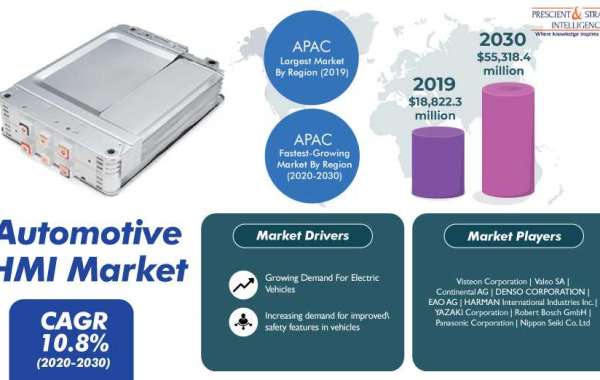The soaring requirement for in-vehicle connectivity is pushing up the demand for automotive human-machine interface (HMI) solutions across the world. Nowadays, people want to stay connected with the outside world while traveling. This is making automobile manufacturing companies integrate various in-vehicle connectivity features and systems in infotainment systems such as real-time traffic monitoring, automobile diagnosis, traffic and collision warnings, and roadside assistance via partnerships with consumer electronics or information technology (IT) vendors.
Besides the above-mentioned factor, the surging adoption of safety features in automobiles, on account of the escalating incidence of road accidents, is also propelling the demand for automotive HMI solutions across the world. According to the World Health Organization (WHO), more than 1.35 million lives are lost every year because of road accidents and crashes. Moreover, according to the organization, road accidents are the eighth major cause of deaths across the globe.
Because of this reason, the governments of many countries are enacting mandatory policies aimed at promoting the adoption of safety features in automobiles, thereby fueling the popularity of automotive HMI solutions. These solutions offer various safety features such as touch screens, mobile devices, and voice interactions that help drivers understand necessary information, which, in turn, leads to a huge reduction in the chances of road accidents. Due to these factors, the adoption of automotive HMI solutions is rising in automobiles.
Because of the above-mentioned factors, the global automotive human-machine-interface (HMI) market is set for lucrative growth in the future. The valuation of the market is predicted to surge from $18,822.3 million in 2019 to $55,318.4 million by 2030. Furthermore, the market will progress at a CAGR of 10.8% between 2020 and 2030. Based on product, the market is divided into instrument clusters, rear-seat entertainment units, heads-up display, central displays, multifunction switches, gesture recognition systems, steering-mounted controls, and voice recognition systems.
Out of these, the heads-up displays category is predicted to exhibit the fastest growth in the automotive HMI market in the forthcoming years. This will be due to the fact that several mid-priced and premium automakers around the world are increasingly integrating heads-up displays in their vehicles for enhancing vehicular safety. These displays help drivers see vital information such as system warnings, multimedia information, and driving status on the windshield of the automobile.
Geographically, the automotive HMI market recorded the highest growth in the Asia-Pacific (APAC) region in the past and this trend will continue in the upcoming years as well, as per the forecast of P&S Intelligence, a market research company based in India. This will be because of the growing requirement for passenger cars in the regional countries, on account of the increasing purchasing power of the people residing in these countries.
Therefore, it can be said with full surety that the demand for automotive HMI solutions will soar all over the world in the future years, primarily because of the rising requirement for safety features in vehicles and the mushrooming popularity of in-vehicle connectivity.








